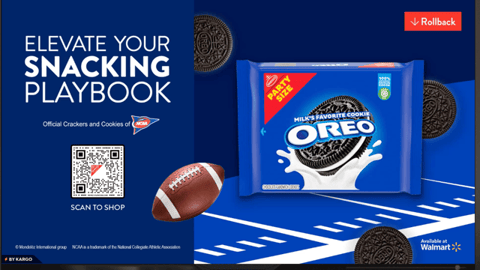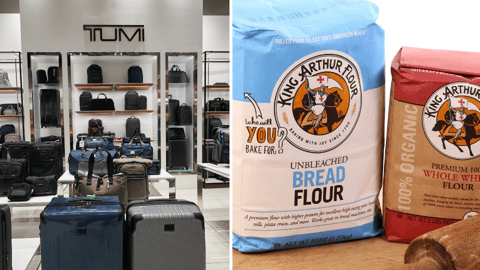COVID-19’s Impact On the Rise of Consumer Goods Subscriptions
Direct-to-consumer (DTC) is rapidly becoming common practice for brands seeking to maximize the lifetime value of each customer. Even traditional brands like Frito-Lay are getting in on the DTC game with the launch of Snacks.com, which offers shoppers the opportunity to get their Doritos and Flamin’ Hot Cheetos straight from the source.
In a time of major disruption, fear of in-store shopping and e-commerce booms, consumer goods brands are taking an extra step to ensure their customers get the items they need and want through subscriptions. If they act accordingly, brands have a unique opportunity to ride a massive wave of subscription adoption to create a sustainable and profitable strategy during and beyond the height of COVID-19.
COVID-19’s Shock to Shopper Behaviors
As we’re all aware, consumer behavior shifted drastically as soon as the grave danger of the pandemic became clear. The massive migration to online shopping sent shockwaves through the system from grocery to medicine to clothing, and everything in between.
With the uncertainties of COVID-19 and reduced in-store traffic, consumer goods brands have increasingly found refuge with subscriptions — reaching customers in the safety of their own homes. In fact, according to internal Ordergroove data, during COVID-19, key consumer categories have seen significant subscription enrollment growth, including:
- Food & Grocery: +114%
- Pet Supplies: +352%
- Health & Wellness: +25%
- Beauty: +100%
Shoppers who were unwilling or unable to visit brick-and-mortar stores turned to subscriptions for a safer and more convenient experience. While this makes obvious sense during stressful times, it’s unlikely consumers’ newfound love for subscriptions will disappear once the pandemic ends.
Consumers are developing new shopping habits around subscriptions — enjoying the convenience and cost-saving aspects. Subscription retention rates remained steady throughout 2020, in line with 2019. As we move into 2021, we can expect subscription enrollment rates to remain higher than pre-COVID figures.
Establishing Direct Relationships with Shoppers
In light of shoppers’ adoption, you can absolutely expect more consumer goods brands to invest in subscription offerings. Their motivation won’t just be to give shoppers what they want — it will also benefit the wants, and needs, of brands too.
In a time when shoppers are reimagining their purchasing journeys, consumer goods brands have the perfect opportunity to reimagine their connections with customers. One-to-one relationships offer these brands the benefits of more control, a better feedback loop, access to customer data and more — especially when amplified by subscriptions.
Shifting From Customer Acquisition to Long-Term Connections
The past year has presented brands with a host of unforeseen challenges. Many found themselves scrambling to adapt to digital-only shopping at the height of the pandemic, and customer acquisition costs skyrocketed thanks to the influx of businesses spending online, driving up competition for ad space on most platforms.
At the tail end of 2019, Facebook costs were already up 90% year-over-year, a trend that shows no sign of slowing as brands fight to grow digital sales and stand out in a crowded space.
So, how can consumer goods brands establish brand loyalty and thrive in an increasingly competitive digital marketplace? The answer lies in focusing on growing recurring revenue and customer lifetime value.
Consumer goods brands need a consistent revenue stream to stay afloat in this competitive online market. A subscription program unlocks recurring revenue, which makes finances more predictable.
Meanwhile, strong customer lifetime value comes from happy, returning customers, so brands need to escalate their personalization tactics. Subscriptions open opportunities for brands to better understand their customers, as they have more data to analyze. This enables them to deliver personalized offerings and upsell shoppers based on their previous shopping behaviors — both of which will help brands increase their bottom line.
Subscription services are a win for both the consumer and the brand: Consumers can expect the goods they want to be delivered in regular, predictable intervals, without stressful shopping situations or closed stores.
Conversely, brands form long-lasting, lucrative relationships with shoppers. Subscriptions have become, on average, 217% more profitable for SaaS companies than one-time customers and are equally crucial for consumer-facing brands who embrace relationship commerce best practices and focus on their recurring revenue programs. By prioritizing subscription and membership packages, consumer brands invest in a lasting, stable future with their customers.
A Winning Plan for the Future
COVID-19 has forged a new era of commerce and brands must act accordingly to capitalize, or even survive, the mid- and post-pandemic landscape. As consumers increasingly gravitate toward e-commerce and face more options online, it’s important for brands to prioritize their consumer relationships to stay competitive.
To achieve this, consumer goods brands can take advantage of the moment and embrace subscriptions to reach their customers directly, in a unique and long-lasting way.
Greg Alvo is CEO of Ordergroove.




